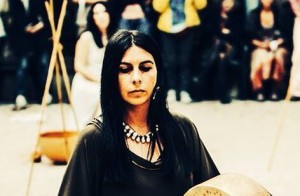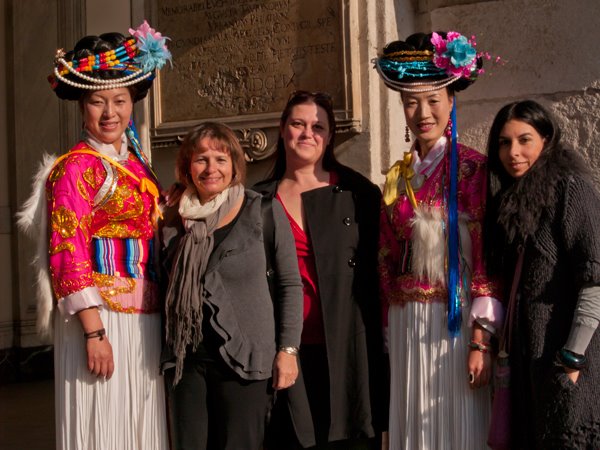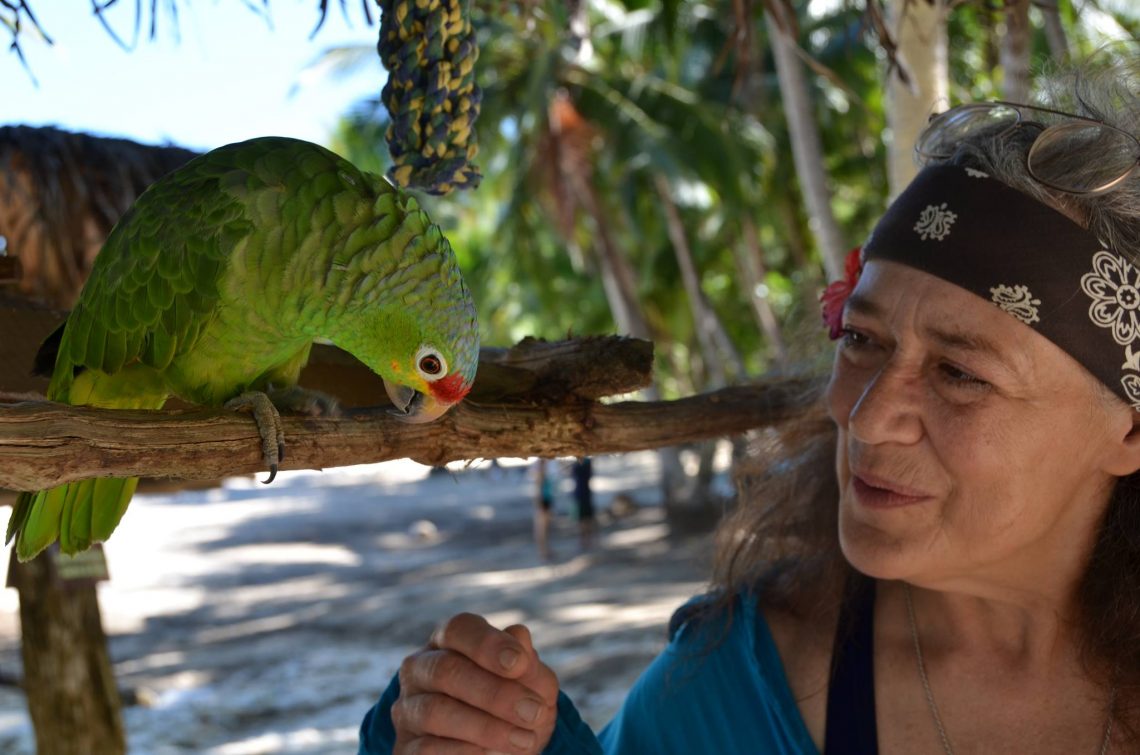
How did you first get involved with these arguments?
Well, first of all, as an artist. My research had always been inspired by a passion for things archaic, but at the time, I still knew little about the Neolithic age. But then, one evening, I ended up making this drawing of a woman with strange features, and she had this enormous belly, and huge breasts. I was not used to this at all, for at the time I was absorbed in color and very stylized images. So this came as something completely new, and very powerful, and it seemed to have come just out of nowhere. And a few days later I found out that I was pregnant. But it proved to be much more than just an anticipation of my new life as a mother. The very same week, while I was strolling about a library, a book caught my attention. On its cover, there was the depiction of a woman that uncannily resembled the one I had drawn only the other night. It was an ancient statuette from Cyprus. From this moment on, I sensed that I had a path to follow. And I just devoured the books by Gimbutas, Riane Eisler, and then Vicki Noble and Luciana Percovich (IT) . Both Vicki and Luciana have had a fundamental impact on me, both intellectually and spiritually. Another impulse came from my encounter with Genevieve Vaughan, and my friends from the Associazione Armonie in Bologna. They had been the first to translate the work of Heide Goettner Abendroth, at a time when none of her books were published in Italy yet.
So it was basically the quest for female spirituality that led you on?

Yes, definitely. Female spirituality had surfaced again towards the end of the nineteen seventies. Archeology, anthropology, art and research all combined to bring forth an immense documentation that attested a period in human history when women were honored as an emanation of the Goddess of Life, a female principle that was much older than Zeus and all the Olympic gods, or the God Father of monotheism. Amongst all that turmoil around the discovery of the Goddess culture, the main basic question was this: “if there ever was a female spirituality, ancestrally testified for by women, then what was it like, and in what kind of society did it thrive and flourish?” Whoever sets out on the path of female spirituality, delving into Goddess culture, is sooner or later bound to raise certain questions. Just as whoever studies matriarchy must take female spirituality into account. There is a profound connection linking these two aspects. But the term “matriarchy” continued to be very controversial. We were not so sure whether we wanted to use it. And so we came up with the concept of “Native Peace Cultures”.
I felt it was really important to lend a voice to the people still living within such societies, and confront ourselves with the ideas that western people had regarding them. And so, in a joint effort with Luciana Percovich, Sarah Perini and Daniela Degan (IT), we organized this international meeting. We liked the idea of creating a situation where people from all over the world would meet and discuss and share the values of matriarchy with us, whilst we were trying to bring these values to the necrophile society we live in.

In 2012, Laima and the Native Peace Cultures Conference, for the first time ever, invited two spokeswomen of the Moso community to Italy. The Moso are also known as “Country of Women” or the people without husbands (or wives). Among the guests of this new meeting, there were Maria Teresa Panchillo and Yessica Huenteman Medina, from the Mapuche in Chile, and Malika Grasshoff, from the Kabyls of Algeria. How did you manage to contact all these women, and how did they respond to the invitation by Laima?
Inviting two spokeswomen from the Moso community to Italy turned out to be no easy task, an endeavor which would have been altogether unthinkable without the precious help from Francesca Rosati Freeman. As you can imagine, bringing two members of an ethnic minorities of China to this country was not that easy. Anyhow, we mostly get our contacts worldwide from other independent researchers who treat similar arguments. All the people that have been involved so far have always gladly accepted, being very proud of their cultural heritage, and honored to discuss it.

The conferences organized by Laima have always featured workshops and artistic performance. This was also the case for the workshop on Saturday March 19th 2016 (afternoon) dedicated to drawings and magic writing of the Berber women in North Africa, or Sunday March 20th (morning) with Susun Weed on herbal medicine, as well as that on Mapuche art, amongst others. What determined this choice?
We have no intention whatsoever to limit ourselves to a merely mental approach to any culture. If we were to limit ourselves to words and lectures, we would remain on a merely rational level, and we might risk remaining within the limits of what we call the “dominant system”. The challenge is to communicate on more levels, transforming the pyramid into circles that comprise all parts of the self. In these terms, art remains a preferred channel.
One more word on art. The work of photographer Pierre de Vallombreuse comes to my mind, who will speak this Sunday afternoon. How do you connect to his work? And how would you explain the prominence of art that characterizes all of your research and activities?
Art is the key that allows us to access reality as a whole. In a society that is painstakingly retrieving a sacred dimension in matter and upon earth, art could regain its place, instilling harmony and beauty into daily life. It could contribute to a profound celebration of life, rather than being its fleeting surface, mirroring a sexist and violent society. When I first saw the work Pierre dedicated to the matriarchal societies of Asia, I was profoundly struck by his ability to capture the very essence of these cultures, and I remain most curious about his male point of view. I think that is essential that we reinvest reality with the values of matriarchy, as native activist Bernedette Muthien puts it, and both women and men must contribute in that sense.
Excerpt from interview by COMUNE-INFO
To read the whole article CLICK HERE (IT).